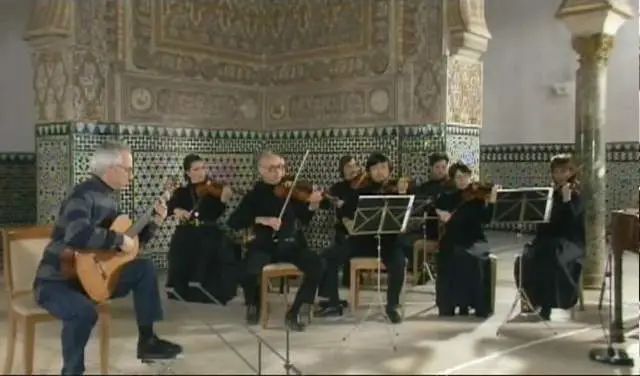One of the most beautiful pieces of Baroque music: John Williams plays Antonio Vivaldi’s Concerto for Lute in D-Major, RV 93.
Antonio Vivaldi wrote many concertos for various instruments, including lute and mandolin. This Concerto in D major for Lute and Orchestra has been transcribed for guitar. It remains one of the finest examples of Baroque music, it has been recorded by many artists. John Williams’s version is one of the best examples of these.
And if you want to listen to the concerto played with the original instrument (lute), watch the beautiful video below: Michael Fields plays Vivaldi’s lute concerto en D-Mayor at Sastamala Gregoriana Festival in Finland, July 2008, accompanied by members of New Trinity Baroque. His instrument is an archlute by Stephen Gottlieb.
Vivaldi’s Lute Concerto in D-major
Concerto for Lute in D-major (RV 93) is a chamber concerto scored for solo strings and lute. During Vivaldi’s lifetime, the lute was nearing the end of a long and distinguished career as a solo instrument, its final glory achieved in the suites of Bach and his fellow German, Silvius Weiss. The D major Concerto, along with the Trios for violin and lute in G minor, RV 63, and C major, RV 85 was composed in Bohemia during the 1730s.
In this short, attractive three-movement work, Vivaldi exploits the instrument’s timbres and ability to play arpeggios to appealing effect.
It opens with an Allegro giusto whose ritornello contrasts a tuneful opening theme with a more lyrical motif in the minor mode. The soloist enters the same material, which is worked out with typical alternation between soloists and strings.
The central Largo is a reflective meditation by the soloist over sustained violin accompaniment and pizzicato bass, with an exquisitely simple shift from triple to duple meter, while the final Allegro brings a return to the high spirits of the first subject of the opening movement and has a bit of tarantella-like feel with its 6/8 rhythms.
As with Vivaldi’s other works for lute, the Concerto for Lute in D was not published during Vivaldi’s lifetime. The autograph manuscript is preserved in the Biblioteca Nazionale, Turin. (allmusic.com)
Movements
- Allegro: The first movement is in a fast tempo and begins with a ritornello played by the violins and then repeated by the solo lute. According to AllMusic critic Brian Robins, the ritornello “contrasts a tuneful opening theme with a more lyrical motif in the minor mode.” During the movement, the solo lute plays melodies in contrast to the ritornello. The movement consists of several sections, almost all of which incorporate a portion of the ritornello melody.
- Largo: The second movement also consists of several sections. Robins describes this movement as a “reflective meditation by the soloist” against accompaniment by the violins and pizzicato bass. Robins praises the movement’s “exquisitely simple shift from triple to the duple meter.”
- Allegro: The third and final movement is another fast movement in a 6/8 time signature which Robins describes as having “a bit of tarantella-like feel.” The soloist also has the option of playing the half notes in the movement using a more vigorous 12/8 time signature.

